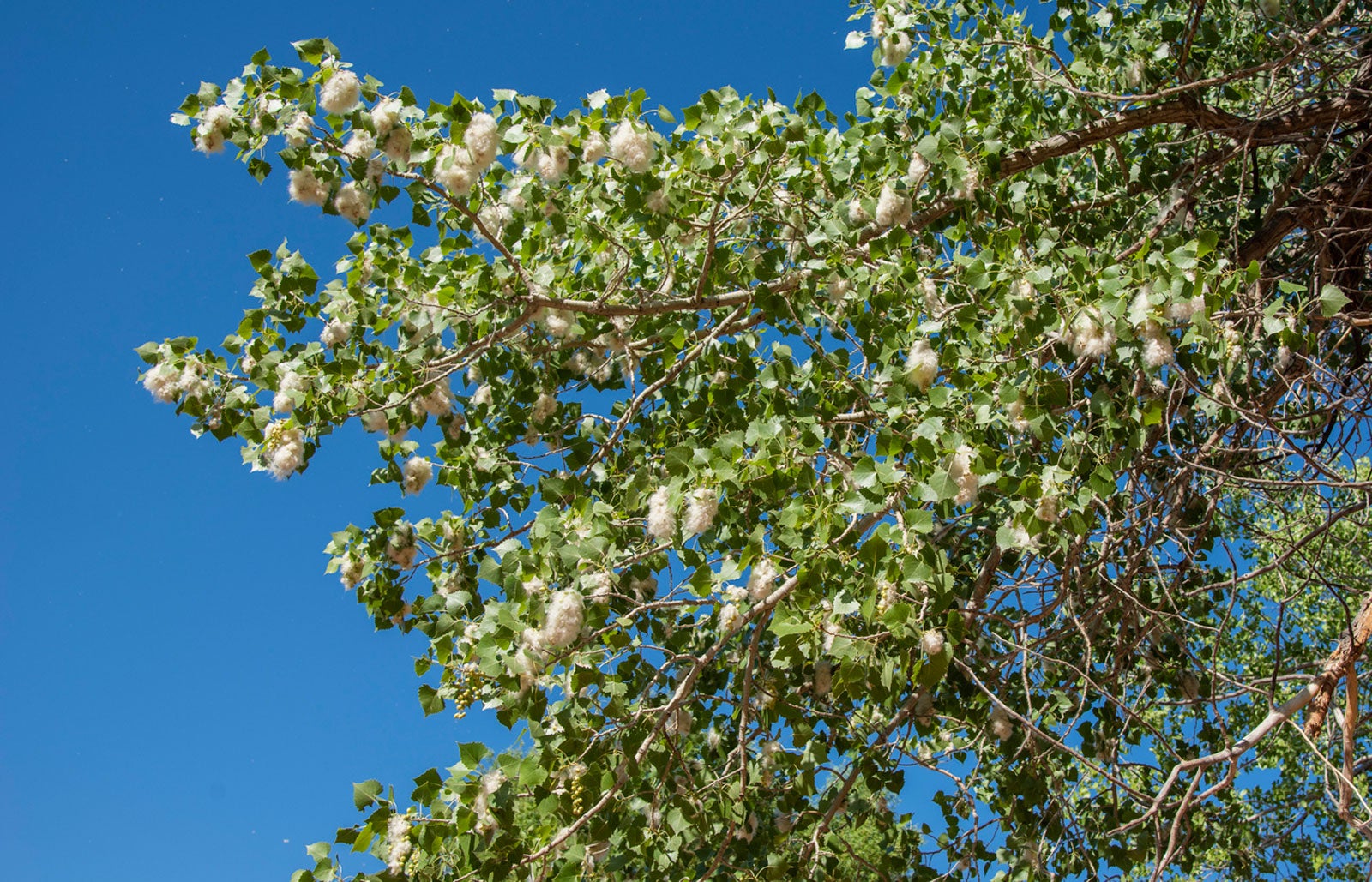Planting Cottonwood Trees: Cottonwood Tree Uses In The Landscape


Cottonwoods (Populus deltoides) are massive shade trees that grow naturally throughout the United States. You can recognize them at a distance by their broad, white trunks. They have lustrous, bright green foliage in summer that changes to brilliant yellow in fall. Read on for more cottonwood tree facts.
What are Cottonwood Trees?
Members of the Poplar family, cottonwoods were important to Native Americans who used all parts of the tree. Their trunks were used as dugout canoes. The bark provided forage for horses and a bitter, medicinal tea for their owners. Sweet sprouts and inner bark were a food source for both humans and animals. The trees also served as trail markers and meeting places for both Native Americans and early European settlers. Cottonwood trees produce male and female parts on separate trees. In spring, female trees produce tiny, red blooms that are followed by masses of seeds with a cottony covering. The cotton-covered seeds create a significant litter problem. Male cottonwood trees don't produce seeds.
Planting Cottonwood Trees
Cottonwoods need a location with full sun and lots of moisture. They grow particularly well along lakes and rivers as well as in marshy areas. The trees prefer sandy or silty soil, but will tolerate most anything but heavy clay. They are hardy in USDA plant hardiness zones 2 through 9. Planting cottonwood trees in home landscapes leads to problems. These messy trees have weak wood and are prone to disease. In addition, their massive size makes them out of scale for all but the largest landscapes.
How Fast Does a Cottonwood Tree Grow?
Cottonwood trees are the fastest growing trees in North America. A young tree can add 6 feet (2 m.) or more in height each year. This rapid growth leads to weak wood that is easily damaged. The trees can grow to well over 100 feet tall (30 m.), with eastern species sometimes reaching 190 feet (59 m.). The canopy of a mature tree spreads about 75 feet wide (23 m.), and the diameter of the trunk averages about 6 feet (2 m.) at maturity.
Cottonwood Tree Uses
Cottonwoods provide excellent shade in lakeside parks or marshy areas. Their rapid growth makes them well-suited to use as a windbreak tree. The tree is an asset in wildlife areas where their hollow trunk serves as shelter while the twigs and bark provide food. As lumber, cottonwood trees tend to warp and shrink, and the wood doesn't have an attractive grain. Pulp made from cottonwood yields high-grade book and magazine paper, however. The wood is often used to make pallets, crates, and boxes.
How to Trim a Cottonwood Tree
If you already have a cottonwood tree in the landscape, pruning may be necessary to control its growth. The best time to prune cottonwoods is late winter while the tree is dormant. Prune for proper growth while the tree is a young sapling. Its rapid growth soon puts the branches out of reach. Always use clean pruners when pruning cottonwoods. The tree is prone to disease, and dirty tools can introduce bacteria, fungal spores, and insect eggs into the pruning wound. Wipe them down with a cloth saturated with alcohol or a disinfectant cleaner, or dip them in boiling water. Begin by removing all the branches from the lower one-third of the tree. Using long-handled pruners, make the cuts close to the trunk, cutting at an angle that slants down and away from the tree. Leave stubs of about one-quarter inch. (2 cm.) Next, remove branches that cross each other and may rub together in the winds. Due to their soft wood, cottonwood branches can develop significant wounds that provide entry points for disease from rubbing.
Sign up for the Gardening Know How newsletter today and receive a free copy of our e-book "How to Grow Delicious Tomatoes".

Jackie Carroll has written over 500 articles for Gardening Know How on a wide range of topics.